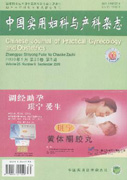Abstract: Objective To examine cellular immune function and postoperative recovery time after receiving laparoscopy operation for pelvic inflammation mass and to investigate the relationship between them. Methods Venous blood samples were collected from patients performed operation for pelvic inflammation mass:32 patients with laparoscopy, the left with abdominal operation. Subgroup of T lymphocyte includeing CD3+,CD4+ and CD8+ was examined by flow cytometer and analyzed with own control;meanwhile,determination of Th1 and Th2 cells was done. Statistics between the two groups, as well as various subgroup Th1, Th2 and, Th1/Th2 ratio differences were analyzed. ELISA method was used for measuring serum IL-18 and IL-10 level and statistical differences between the two groups were analyzed. Postoperative recovery was analyzed,including exhaust time;time of body temperature returning to normal, recovery time of hemogram and length of stay, etc. Results Laparoscopic group T-lymphocyte subsets before and after surgery had no significant difference.One day after laparotomy CD3+, CD4+ and CD8+,compared with the preoperative,were significantly lower after 72h's recovery, but still lower than the preoperative level;comparison of two groups,in the open group CD3+, CD4+ and CD8+ reduced more obvious.In the two groups after two hours,both Th1/Th2 balance to Th2 cells in response to the conversion, Th1 cells, Th1/Th2 ratio, IL-18 decreased(Laparoscopic group: t=2.238, P<0.05; t=7.15,P<0.01;t=6.98,P<0.01; laparotomy group: t=9.45,P<0.01;t=8.56,P<0.01;t=10.17,P<0.01) And Th2 cells, anti-inflammatory cytokines IL-10 increased(Laparoscopic group: t=7.35,P<0.01;t=8.87,P<0.01; laparotomy group: t=6.53,P<0.01;t=7.18,P<0.01). But the laparoscopic group after 24 hours of the indicators that is restored((t=1.82,P>0.05; t=1.38, P>0.05; t=1.72, P>0.05; t=1.78,P>0.05; t=1.89, P>0.05)), and open group of indicators changes and two hours after a similar, and continued until after 48 hours. Conclusions Pelvic inflammatory disease after cellular immune dysfunction may be involved in post-operative recovery; Pelvic Inflammatory Mass laparoscopic resection group T-cell subsets impact of small, and the Th1/Th2 cell balance and rapid recovery of the body's cellular immune effects of small, faster postoperative recovery.

